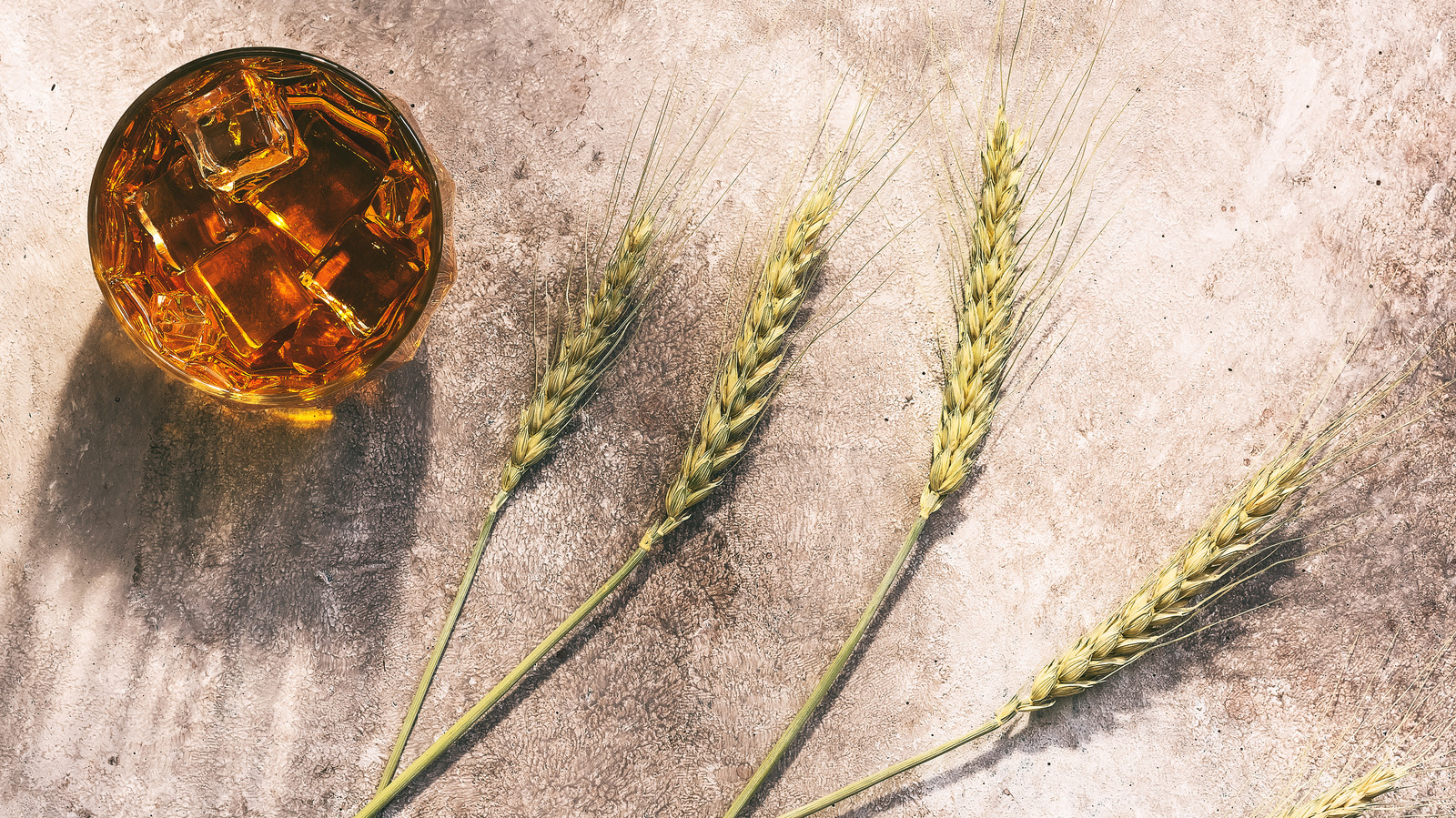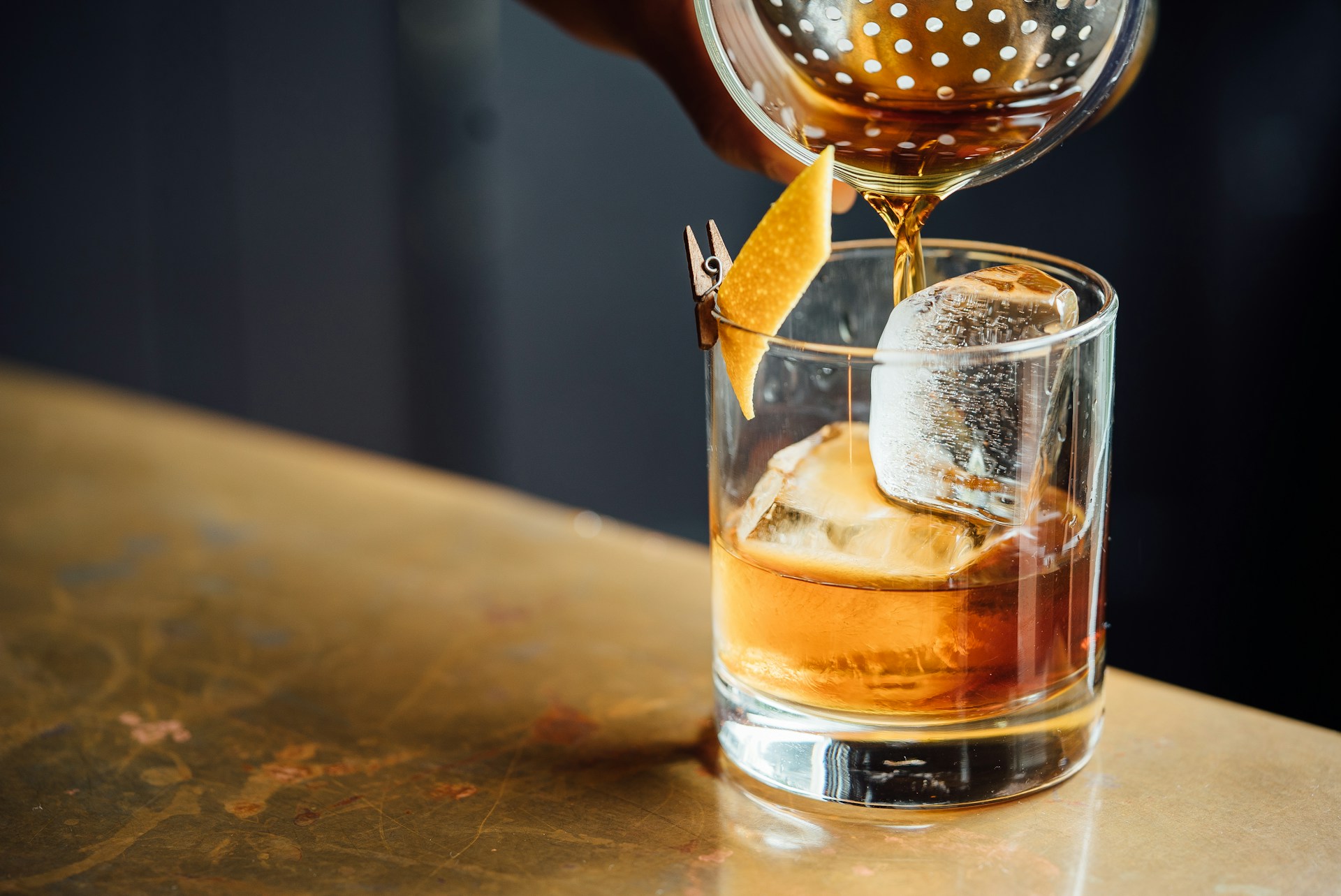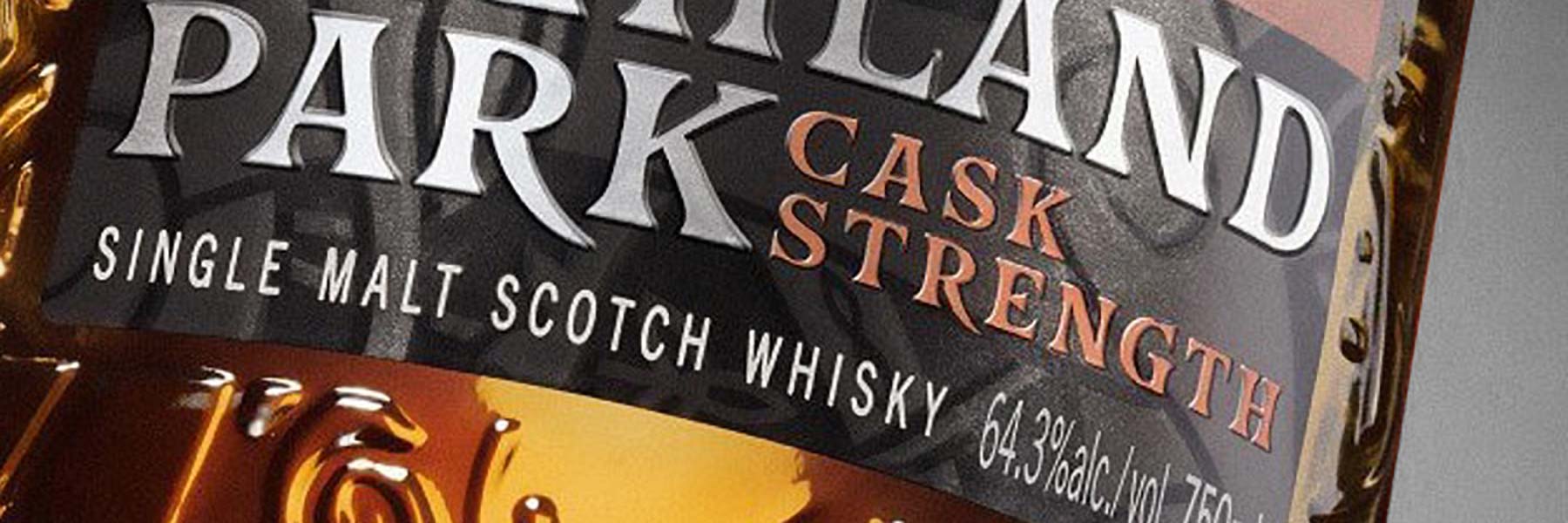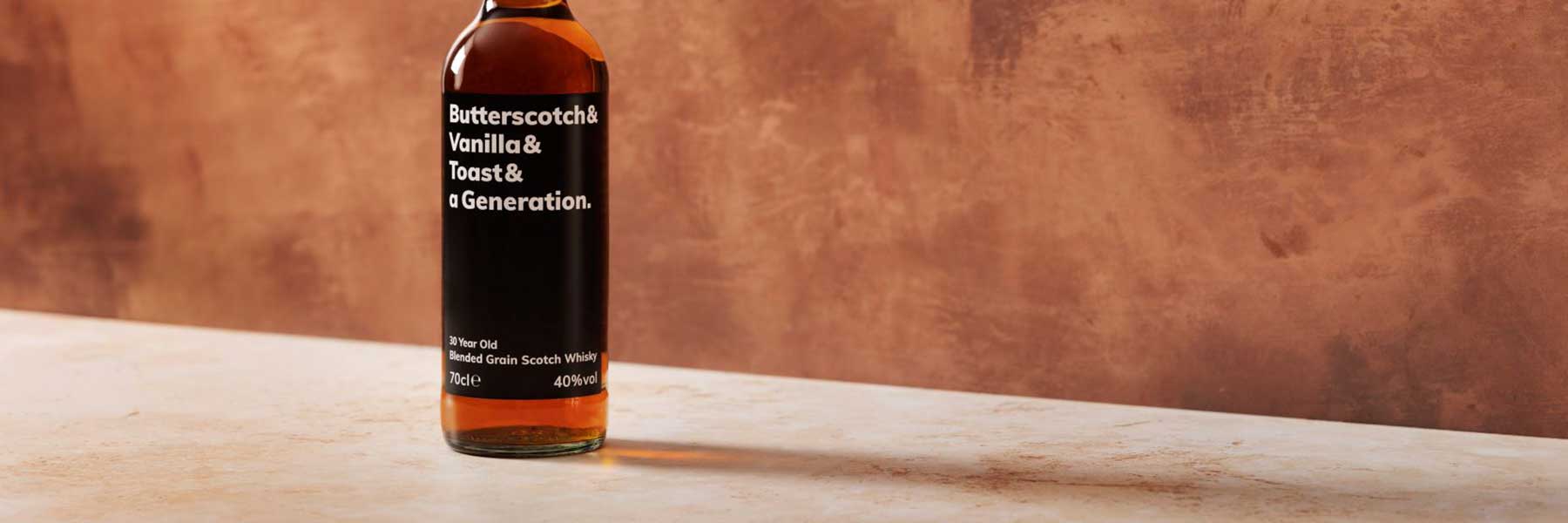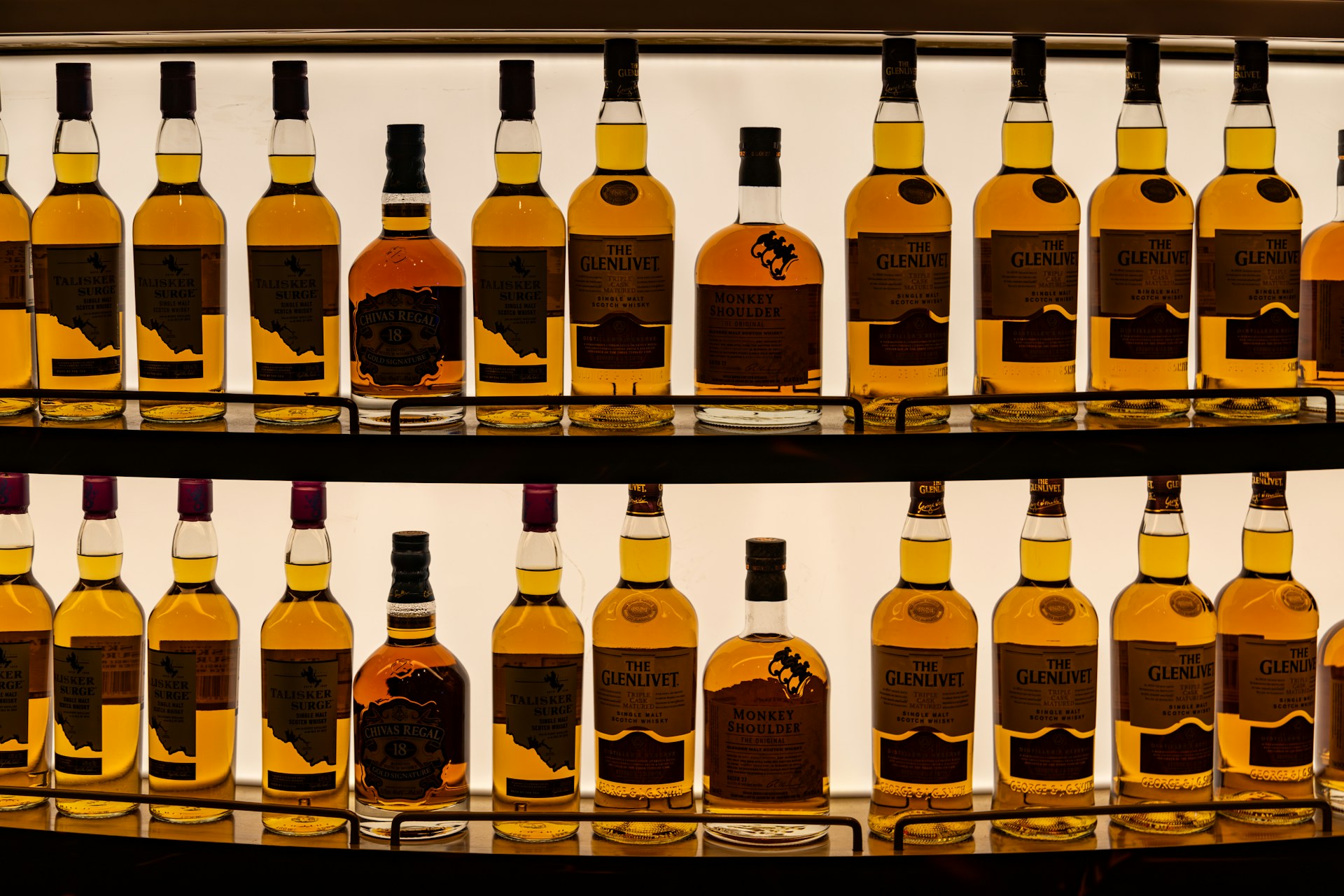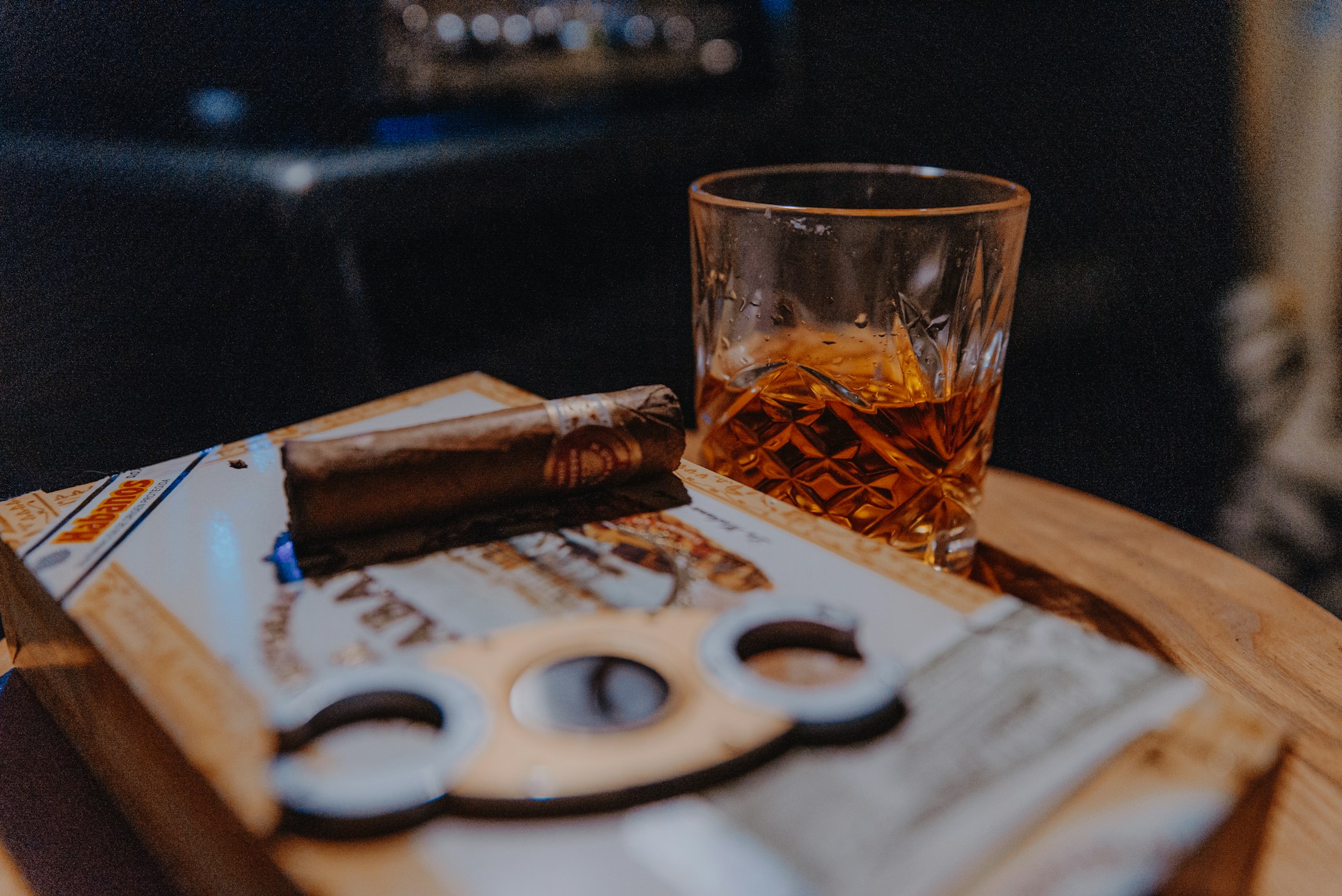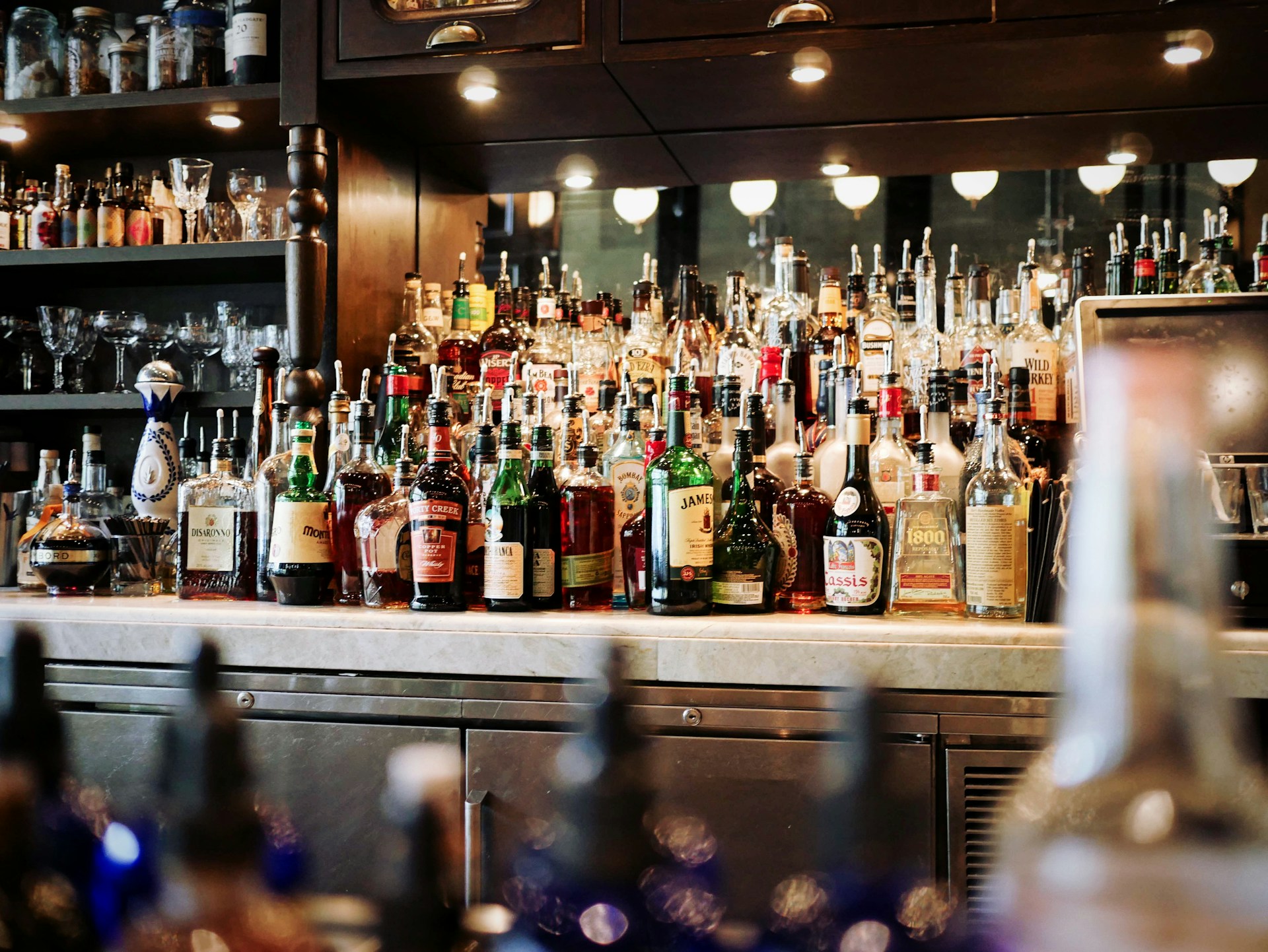What Is Whisky Made Of? Unveiling the Craft and Components
Last updated on August 21st, 2024
At its core, whisky is made from three fundamental ingredients: cereal grain, water, and yeast. Together, they’re combined and fermented into a basic type of beer which is then distilled (refined) into a highly alcoholic neutral grain spirit before cask maturation.
Depending on the whisky or whisk(e)y being made, various cereal grains in varying proportions may be used which can drastically affect the final flavour in your glass.
Despite the simplicity of whisky’s ingredients, the sheer variety of colour, aroma and flavour is simply staggering. The journey from the field to the flask is complex and varied, with grain whisky and single malt whisky each following their own distinct paths.
If you’re curious to know more about these ingredients, this is the article for you.
Let’s dive in.
What Is Whisky Made From?
As mentioned, whisky is made from grain, water, and yeast. Together, these are the pillars of whisky production, each playing a pivotal role in crafting the final spirit. Let’s take a closer look at these few but crucial ingredients.
Grain
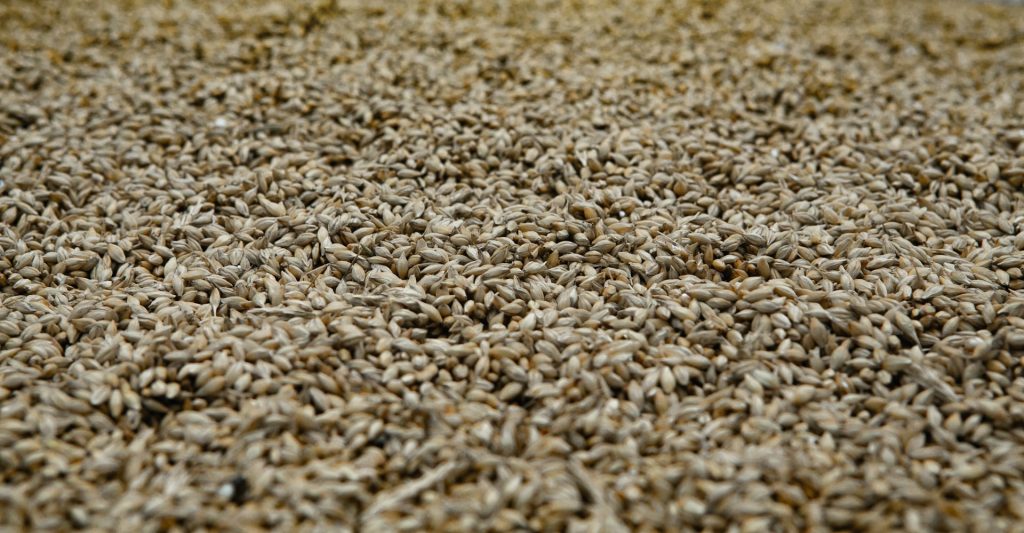
Also known as cereal grains or ‘cereals’, this term collectively describes barley, rye, wheat, oat, maize (corn) or millet. Depending on the country and style of whisky being made, any of these grains can be used to make whisky.
Conveniently, cereal grains contain large amounts of starch which can be released and fed upon by yeast to make a basic type of alcoholic beer. Different grains produce different flavours, but the fundamental principle is to grind and cook them to extract all their sugars into a liquid before being cooled and then fermented with yeast.
Single malt whisky is made using 100% malted barley only. Although these are strongly associated with Scotland, single malt whisky can be made anywhere in the world.
Grain whisky is made using any of the other cereals (with a small addition of malted barley) to aid fermentation. Grain whiskies are typically used to make blended whisky as they provide soft, sweet notes to balance the single malts within the blend. However, grain whisky can be blended with other grain whiskies or used solely on its own.
What Is Blended Grain Scotch Whisky?
What Is Single Grain Scotch Whisky?
Water
Water may not be the most celebrated component in whisky, but it’s undoubtedly essential. Not only is it an ingredient, but it also aids numerous stages of the whisky production process.
As an ingredient, the purity and mineral content of local water supply is argued by many distilleries to significantly influence the final product’s flavour. On many whisky tours around the world, you’ll be told about the significance of mineral content, purity and terroir that ends up in your glass.
In Scotland and Ireland, springs, burns and glens may contain traces of peat in the water, which is often reported to add to the vegetative, iodine flavours in certain peated whiskies.
In America, geological factors such as underground limestone creeks are famed for their purity, especially in the bourbon capital of Kentucky. This mineral-rich water helps to aid fermentation, as well as remove impurities such as iron from the whisky.
As a resource, water is used for various production processes, playing key roles at multiple stages. During mashing, hot water is mixed with malted barley to extract fermentable sugars, a process that significantly influences the whisky’s flavour. In fermentation, water creates the wort, which yeast ferments into alcohol.
Water is also used to heat the wash during distillation and to cool alcohol vapours in condensers or worm tubs, ensuring proper condensation into liquid form. Additionally, water dilutes the distilled whisky to the desired bottling strength and is crucial for cleaning and maintaining equipment throughout production, ensuring a hygienic environment and consistent quality.
Yeast
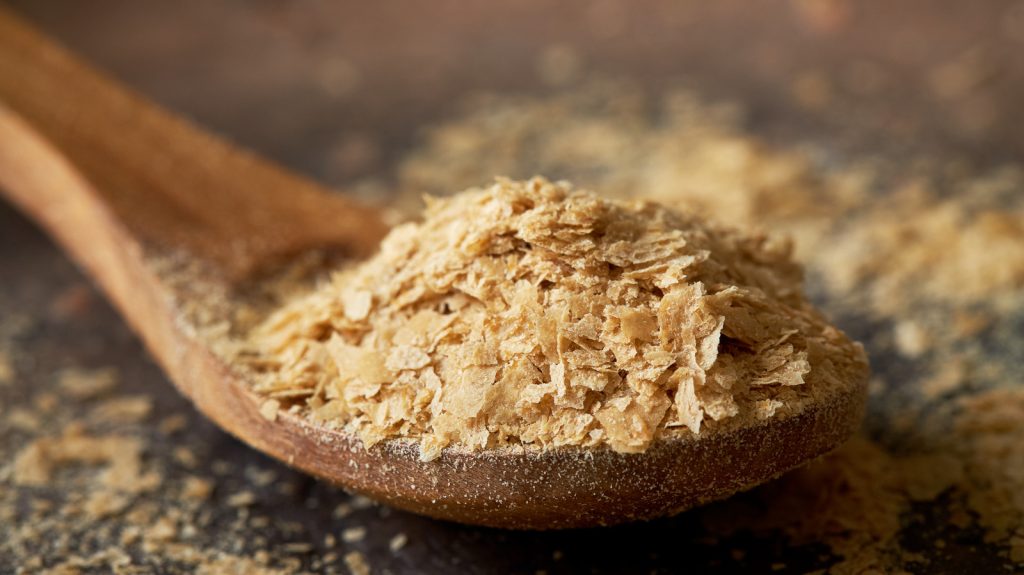
Yeast plays a critical role in converting starch into sugar during whisky fermentation. This living microscopic organism is the unsung hero that sets the stage for alcohol production, working (frantically) to transform the sugary wort into beer – brimming with flavour and great whisky-making potential.
The choice of yeast strain can hugely affect the flavour and aroma of the whisky, with some producers using their own proprietary strains to create distinct notes ranging from tropical fruit, florals, spices and even herbs. The magic of yeast in whisky production is its ability to bring the inanimate grain to life, forming the development of alcohol and amazing flavours.
A great example of proprietary yeast strains are those used by the Four Roses distillery in Lawrenceburg, Kentucky. In total, they have 5 different yeast varieties, which they mix with 2 different mash bills to make their 10 bourbon recipes.
How Is Whisky Made?
So far, you’ve learned about the three key ingredients that make whisky. But the process of making it is slightly more intricate. From grain to glass, check out the stages of whisky production in the steps below.
*Note, this list describes the methods to make single malt whisky and not grain whisky.
#1 Malting
The malting process in whisky production involves three key stages: steeping, germination, and kilning. During steeping, barley grains are soaked in water to increase their moisture content, activating enzymes that begin the germination process. Next, during germination, the soaked grains are allowed to sprout, converting starches into fermentable sugars over several days.
Finally, in the kilning stage, the sprouted grains are dried to stop germination, reduce moisture content, and develop the malt’s flavour. This process is crucial for producing the sugars needed for fermentation and shaping the whisky’s flavour profile.
#2 Milling
Milling in whisky production involves converting malted barley into ‘grist,’ a coarse flour used in mashing. The process begins with the dried, malted barley being passed through a series of rollers in a mill. These rollers crush the barley, breaking it down into three components: husks, grits, and fine flour.
The balance of these components is crucial; husks aid in filtering during mashing, while grits and flour contain the fermentable sugars necessary for producing alcohol. Proper milling ensures efficient extraction of sugars during the subsequent mashing process, significantly impacting the quality and flavour of the final whisky.
#3 Mashing
Mashing is the process where the grist is mixed with hot water to extract fermentable sugars. This step creates a sweet liquid known as wort which provides the necessary sugars for the yeast to feed upon, fermenting it into beer.
#4 Fermentation
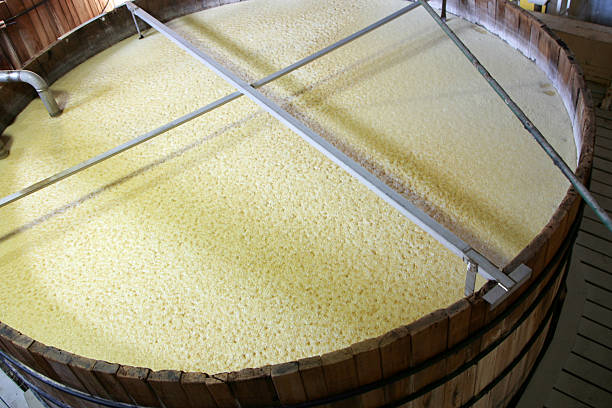
Following mashing, the wort is cooled and transferred to fermentation vessels known as washbacks, where yeast is added. This is where the magic happens, as the yeast converts the starch into sugar, and subsequently into alcohol and carbon dioxide. This process typically lasts several days, where the basic character, flavour and alcohol of the beer begins to form.
The length and conditions of fermentation can influence the final flavour of the whisky, with longer fermentations often resulting in a more complex and flavorful spirit. This stage is critical in whisky production, setting the stage for the distillation process that follows.
#5 Distillation
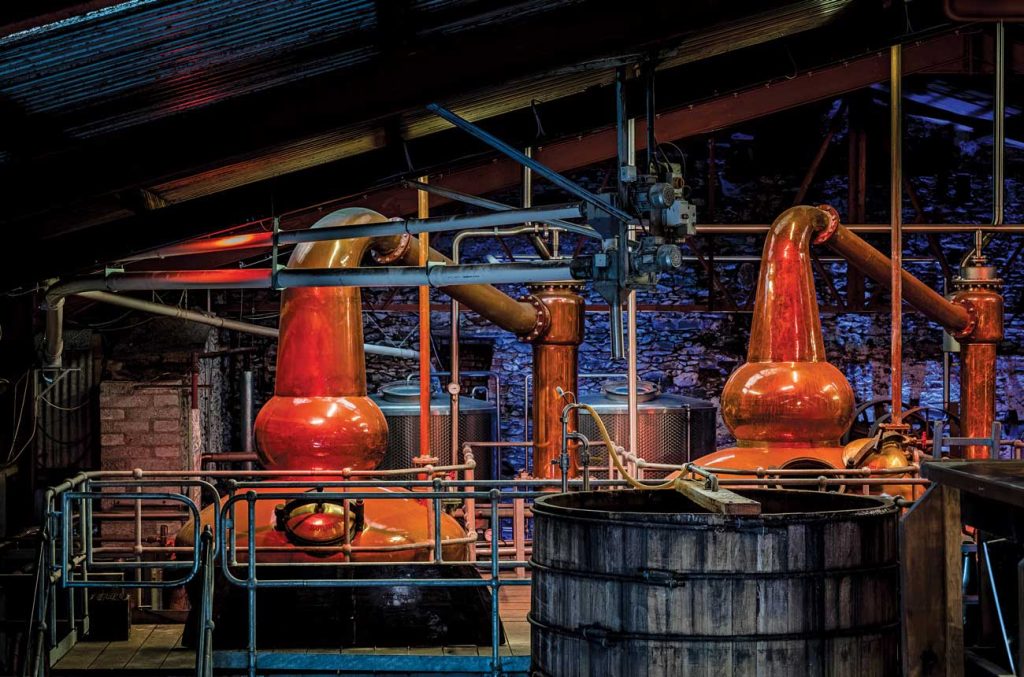
The distillation process in whisky making is where the fermented liquid is heated to separate the alcohol from the water and other components. In Scotland and Ireland, this is typically done in traditional copper pot stills, which help remove impurities and concentrate the alcohol, enhancing the whisky’s flavour and aroma.
Distillation is always done at least twice, with each ‘run’ increasing the purity and potency of the spirit. The distiller’s skill is paramount here, as they must decide the precise moment to separate the desirable ‘heart’ of the distillate from the unwanted ‘heads’ and ‘tails’.
At this stage, the distillate is clear in colour and simply a neutral grain-spirit. For it to become whisky, it must be aged in wooden casks for a minimum of 3 years (in Ireland and Scotland).
#6 Ageing
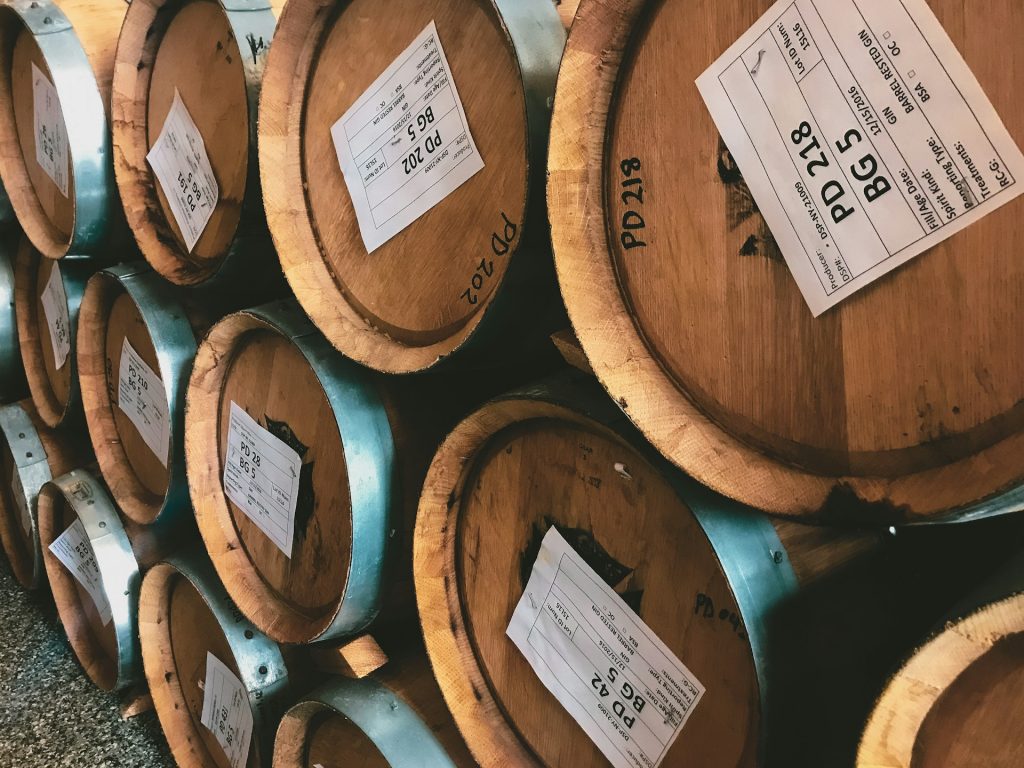
The ageing process is where whisky truly comes into its own, developing its beautiful amber colour, depth, character, and complexity. Once distilled, the clear spirit is transferred into oak casks, often previously used to age bourbon, which contribute significantly to the flavour and aroma of the final product.
Oak is particularly admired for its ability to impart subtle flavours and tannins that enrich the whisky. The length of time spent in the cask, along with the cask’s history and the conditions of the warehouse, all play a role in the maturation process, making it a form of art as much as science.
Cask Finishing
Cask finishing in whisky making involves transferring whisky to a different cask, such as those previously used for sherry, port, or wine, for the final maturation stage to enhance its flavor. Double or triple cask finishing uses two or three different types of casks, respectively, to impart complex and layered flavours to the whisky.
Ex-bourbon Casks
- What they are: Made from American white oak, these casks previously aged bourbon for at least two years, as required by law.
- Flavours: Impart vanilla, caramel, honey, and light spice notes.
Rum Casks
- What they are: Typically made from American or European oak, these casks previously aged rum, which can vary from light to dark styles.
- Flavours: Add tropical fruit, molasses, and spicy sweetness.
Madeira Casks
- What they are: Made from European oak, these casks previously aged Madeira wine, a fortified wine from Portugal.
- Flavours: Contribute rich fruit, caramel, and nutty characteristics.
Wine Casks
- What they are: Made from either American or European oak, these casks previously aged red or white wines.
- Flavours: Impart berry, dark fruit, floral, and tannin notes.
Port Casks
- What they are: Made from European oak, these casks previously aged port wine, a fortified wine from Portugal.
- Flavours: Add rich, sweet, and fruity flavours like raisins, berries, and plums.
Sherry Casks
- What they are: Made from European oak, these casks previously aged sherry, a fortified wine from Spain.
- Flavours: Contribute dried fruit, nut, and rich, sweet spice notes
#6 Marrying
The process of marrying single malt whiskies involves mixing whiskies from different casks to achieve a consistent colour and flavour profile. This step is crucial for creating the final product, as it allows distillers to balance and enhance the characteristics of the individual whiskies.
After marrying, the whisky is often returned to casks for additional maturation, which helps integrate the flavours further. During this stage, water may be added to adjust the alcoholic strength to the desired level. Additionally, E150a (spirit caramel) is sometimes used to ensure colour consistency across batches, providing the final whisky with a uniform appearance
#7 Bottling
The bottling and labelling process of whisky begins with filtering the matured whisky to remove any impurities. It is then measured and diluted to the desired alcohol strength using purified water. The whisky is filled into bottles, which are sealed with caps or corks to ensure preservation.
The bottles then proceed to the labelling stage, where labels are applied, often including essential information such as the brand, age, alcohol content, and any special characteristics. Quality control checks are performed throughout to maintain consistency and ensure the whisky meets regulatory standards before it is packaged for distribution
The Geography of Whisky: National Varieties
Whisky’s character is profoundly influenced by its place of origin, with each country’s traditions and environment leaving an indelible mark on the spirit’s profile.
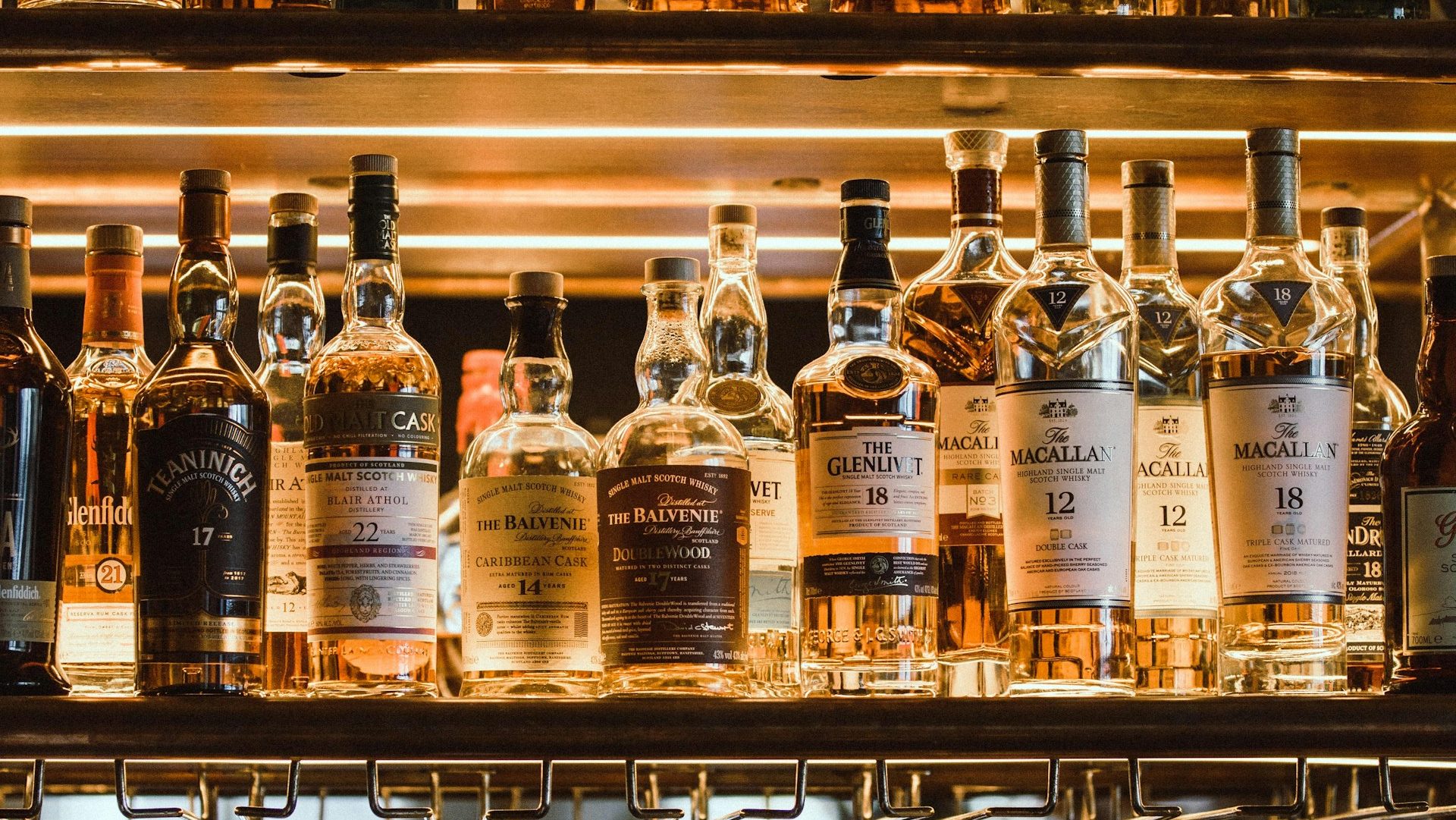
Scotch Whisky
Scotch whisky, known as ‘uisge beatha‘ in Gaelic, is made in Scotland with a dedication to tradition and the influence of the Scottish terroir. The unique production process involves malted barley, water from crystal-clear streams, yeast, and ageing in oak casks for a minimum of three years (and one day).
Types of Scotch whisky
- Single Malt Scotch Whisky
- Single Grain Scotch Whisky
- Blended Malt Scotch Whisky
- Blended Grain Scotch Whisky
- Blended Scotch Whisky
- Cask Finished Scotch Whisky
- Cask Strength Scotch Whisky
Irish Whiskey
Irish whisky charms with its characteristic smoothness, a result of triple distillation, a process that intensifies its clean profile. This extra step, not always used in other whisky traditions, ensures a lighter and smoother spirit.
Whilst Irish whiskey and Scotch share their similarities, the Irish have their own unique subtype known as pot still whisky which uses both malted and unmalted barley. You can learn more about Irish whiskeys in the list below.
- Single Malt Irish Whiskey
- Single Pot Still Irish Whiskey
- Single Grain Irish Whiskey
- Blended Irish Whiskey
- Poitín
American Whiskey
Stemming from the distillation techniques brought over by 18th century Irish and Scottish migrants, American whiskey uses various cereal grains to make some of the world’s most famous spirits.
From the sweet, full-bodied profiles of bourbon, spiced notes of rye whiskey and the soft smooth profile of wheated whiskey, there’s a wide variety to choose from.
Predominantly made from corn, bourbons must contain at least 51% of this grain, while rye whiskeys rely on at least 51% rye. This central ingredient choice is key to the distinctive taste of each American whiskey. The ageing process, typically in new charred oak barrels, imparts deep flavours and a robust character to these spirits.
Japanese Whisky
Akin to the methods of making Scotch, Japanese whisky adopts near identical ingredients and distillation methods. It often uses malted barley, which is sometimes imported from Scotland, ensuring high quality and traditional character. The production process typically involves double pot still distillation, a method that preserves the rich flavours and complexities of the malt.
For maturation, Japanese distilleries use a variety of barrels, including ex-American oak bourbon barrels, ex-sherry casks, and the distinctive Japanese Mizunara oak barrels.
Each type of cask contributes unique characteristics: bourbon barrels impart vanilla and caramel notes, sherry casks add rich dried fruit and nutty flavours, and Mizunara oak barrels provide a unique aromatic profile with sandalwood, coconut, and spice notes.
This careful selection of ingredients and meticulous production techniques results in a whisky that is highly regarded for its elegance, complexity, and depth of flavour.
Canadian Whisky
Although single grain and single malt Canadian whiskies do exist, Canadian whisky is typically a blend of various grain spirits, with corn and rye playing prominent roles. Often referred to as “rye whisky” in Canada (regardless of the grain mixture) these whiskies are known for their mellow flavour and approachability.
The water used in Canadian whisky production, sourced from the pristine Canadian wilderness, is just as important as the grains, contributing to the spirit’s clean taste.
Canadian whisky may not be as widely celebrated as some of its global counterparts, but it holds a proud place in the world of whisky for its easy-drinking and versatile nature.
Indian Whisky
Indian whisky, which has rapidly gained popularity, often incorporates molasses-based spirits, a departure from the grain-based norms of traditional whisky. This is largely due to the availability of ingredients and local tastes.
However, there are also premium brands that adhere to the classic grain spirit composition, using malt and other grains. The Indian climate, with its extreme temperature variations, significantly accelerates the ageing process, influencing the flavour and character of the whisky.
The diversity in India’s whisky production is mirrored in its flavours, ranging from rich and robust to smooth and mellow. Distillers are increasingly experimenting with local grains and traditional methods, contributing to a unique whisky landscape. As the world’s appetite for diverse whisky profiles grows, Indian whisky continues to carve out its niche in the global market.
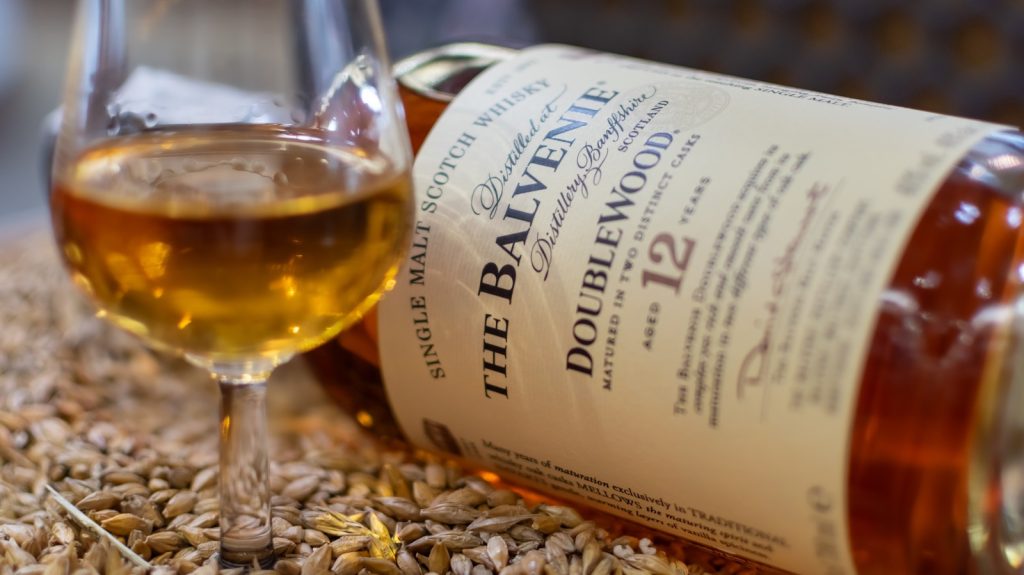
The Grains that Define Whisky Styles
Whisky made from malted barley is at the heart of many Scotch whiskies, imparting a rich and robust flavour profile that is synonymous with the spirit’s Scottish heritage. The malted barley is dried, sometimes over peat, which can add a smoky note to the final product.
In the United States, corn is the dominant grain for bourbon, which imparts a sweeter, fuller flavour that has become a hallmark of the American style. On the other hand, rye whisky, with its spicier and fruitier notes, is made primarily from rye grain.
Canadian whisky often features a mix of grains, but it is traditionally known for its rye content, despite not always being the dominant grain used. This rye inclusion adds a spicy and fruity complexity to the spirit.
Irish whiskey uses malted barley for single malts, but a mixture of both malted and unmalted barley for their unique pot still whiskey.
Japanese whisky, also often made from malted barley, draws inspiration from Scotch whisky but is crafted with a distinct finesse and attention to detail that reflects Japan’s cultural emphasis on precision and purity.
Conclusion
As you’ve journeyed through the craft of whisky making, you’ve hopefully uncovered the basic ingredients and methods that make each bottle unique. From the selection of grains that lay the foundation of flavour to the maturation process that ages the spirit to perfection, whisky is an art form.
Furthermore, you’ve seen how the geography of whisky influences its character, each variety, with its own set of rules and ingredients, contributes to the global tapestry of whisky.
Thanks for stopping by.


